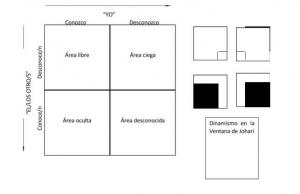The Strange Situation: A Technique for Assessing Child Attachment
The first years of a child's life are characterized by a series of significant changes, in which emotional development and the establishment of social ties take on special relevance. This has led psychology professionals to delve into the safety and security relationships that are established between babies and their primary caregivers. The most outstanding contribution is the Attachment Theory, developed by John bowlby between 1969 and 1980.
Attachment refers to the emotional, affective and intense bond that is established between a baby and its main caregiver, usually the mother or father. This bonding style begins in childhood, around 3 months of age, and continues throughout life, in relationships with friends, partners and children. In this way, the attitude of parents towards their children and the type of attachment that is established between both will determine the quality of the emotional bonds that the baby will establish throughout its lifetime.
Although Bowlby laid the foundations of this theory, it was the psychologist Mary Ainsworth, who in 1960 elaborated
the first attachment assessment technique, known as "Strange Situation". Let's see what it consists of.- Related article: "Attachment Theory and the bond between parents and children"
The Strange Situation Technique
This is a technique designed by psychologist Mary Ainsworth and used in Developmental Psychology in order to determine the nature of the attachment style in children from 12 months of age. This technique involves studying the child in laboratory conditions, in interaction with their main caregiver and a strange adult, simulating three types of situations:
- Natural interactions between the caregiver and the child in the presence of toys.
- Short caregiver separations and brief encounters with a strange individual.
- Episodes of meeting with the caregiver.
The experiment was carried out in a small room with univision glass, in order to observe the baby's behavior covertly. The sample consisted of 100 middle-class American families with babies between 12 and 18 months.
The procedure to follow
The procedure consisted of observing the baby's behavior in a series of 8 episodes that lasted approximately 3 minutes each, being able to be shortened if the baby was excessively distressed. The different stages of the experiment are presented below:
1. Mother, baby and experimenter
In this phase, the observer introduces mother and baby to an experimental room with toys. Lasts approximately 30 seconds.
2. Mother and baby
In this episode, baby is exploring the room and toys, while the mother does not participate in the activity.
3. The stranger joins the mother and son
It is the moment when a stranger enters the room. During the first minute, he is silent, to converse with the mother in the second minute. During the third minute, the stranger begins to approach the baby.
4. The mother leaves the baby and the stranger alone
It is the first episode of separation in which the mother leaves the room. The stranger's behavior is coordinated with the baby's.
5. The mother returns and the stranger leaves
It is the first episode of reunion. The mother enters, greets and comforts the baby, trying to get him back to his game activity.
6. The mother leaves, abandoning the baby
This is the second phase of separation.
7. The stranger returns
The separation from the mother continues, but now the stranger enters to try to interact with the baby
8. The mother returns and a stranger leaves
It is the second reunion episode in which the mother enters, she takes the baby in her arms and the stranger leaves the room.
Classification of attachment styles
Attachment classifications are mainly based on the observation of 4 interaction behaviors directed towards the mother in the two reunion episodes (Episodes 5 and 8). These behaviors are:
- Proximity and contact search.
- Contact maintaining.
- Proximity avoidance and contact.
- Contact resistance and comfort.
The observer notes the behavior displayed during 15-second intervals and rates the intensity of the behavior on a scale of 1 to 7. At the end of the observation, three attachment styles are established to describe the bond that babies manifest with their mothers.
1. Secure Attachment
Babies feel safe to explore freely during separation episodes. They show distress when the mother leaves and react enthusiastically when she returns. This pattern occurred in 65% of the babies.
2. Avoidant attachment
Babies included in this guideline are described as insecure-avoidant. They show little anxiety about separation and when the mother returns they tend to avoid it. This case occurred in 25% of the babies.
3. Ambivalent Attachment
The baby shows distress throughout the entire procedure, especially during the separation. Meetings with a caregiver produce a mixture of anger release addressed to the same. This pattern occurred in only 10% of the babies.
To learn more about attachment and its different types, you can consult this article: "Child attachment: definition, functions and types"
Bibliographic references:
- Bowlbz, J. (1993). Attachment: attachment and loss. Iberian Paidos.
- Wallin, D. (2012). Attachment in psychotherapy. Desclée De Brouwer.


